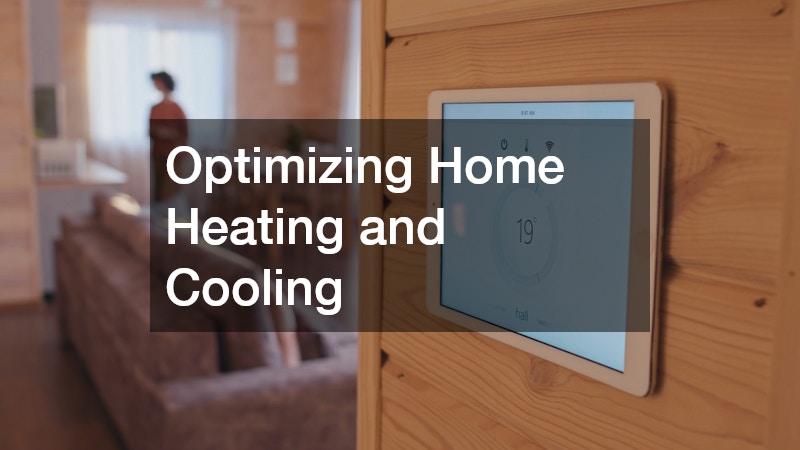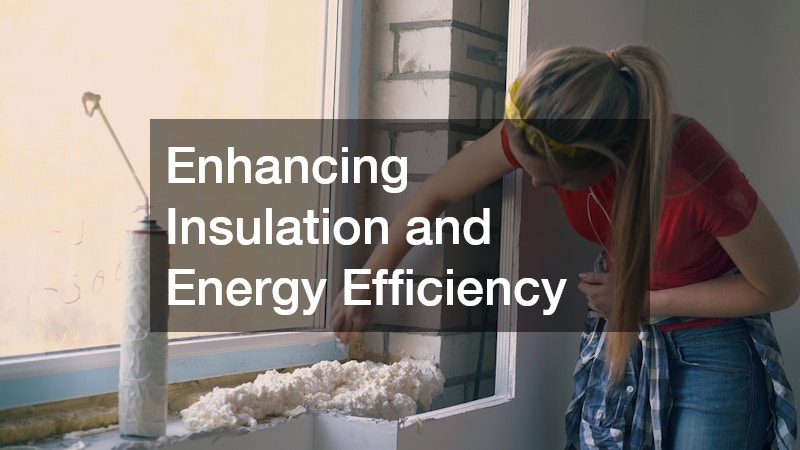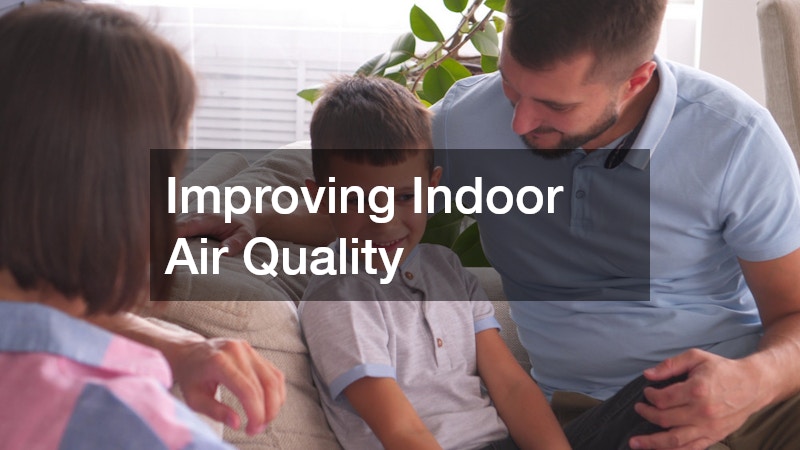Creating a home that supports family sustainability isn’t just about saving money—it’s about making choices that benefit both your household and the environment. From energy-efficient upgrades to small eco-friendly tweaks, every improvement can make your home more sustainable while increasing comfort, safety, and long-term value. Sustainable home projects often focus on energy conservation, reducing waste, and using renewable or responsibly sourced materials.
For busy families, making these upgrades may seem overwhelming, but many projects are simple, cost-effective, and can be completed with minimal disruption. This guide will explore actionable ways to improve your home while promoting family sustainability, offering strategies that range from outdoor enhancements to indoor systems, all designed to reduce your environmental footprint and enhance long-term livability.
Building Eco-Friendly Outdoor Spaces
Your outdoor space is a great place to start when thinking about family sustainability. Landscaping, fencing, and garden designs can improve energy efficiency, reduce waste, and create safer, healthier spaces for your family. One practical approach is to focus on materials that are renewable and responsibly sourced.
Replacing an old fence with a sustainably sourced wooden fence is a simple way to promote environmental responsibility. Look for wood certified by organizations like the Forest Stewardship Council (FSC) to ensure it comes from well-managed forests. Proper sealing and maintenance extend its lifespan, preventing frequent replacements and reducing material waste. Additionally, a well-designed wooden fence can provide wind and sun protection, helping regulate your garden’s microclimate and potentially lowering home energy costs.
Another tip for sustainable outdoor spaces is incorporating native plants and rain gardens to reduce water use and support local biodiversity. By choosing long-lasting, eco-friendly materials and thoughtful plantings, you can create a backyard that supports family sustainability while enhancing curb appeal.
Upgrading Your Home’s Water Systems
Water is a precious resource, and optimizing your home’s plumbing is a key step toward family sustainability. Conserving water reduces utility bills and helps preserve local water supplies for future generations. Simple upgrades like installing low-flow faucets, showerheads, and dual-flush toilets can make a significant difference. Consider scheduling a routine audit of your home’s water usage to identify high-consumption areas and target them for improvements.
Hiring a professional plumbing contractor ensures that all pipes, fixtures, and connections are properly installed and leak-free. A contractor can also inspect your home for hidden leaks and recommend upgrades such as tankless water heaters or water-efficient irrigation systems. For DIY enthusiasts, adding aerators to faucets and fixing dripping taps can save hundreds of gallons per year, reinforcing your commitment to family sustainability. Additionally, replacing old or corroded pipes can prevent future leaks and improve water quality, further supporting sustainable living.
Rainwater harvesting is another option for sustainable homes. Collecting rainwater for garden irrigation or non-potable uses reduces reliance on municipal water and reinforces eco-conscious living practices for your household. Pairing rainwater collection with a simple filtration system ensures safe and efficient use, making it a practical step toward long-term family sustainability.
Maintaining a Sustainable Roof
A home’s roof is one of its most critical elements in maintaining energy efficiency. Proper roofing materials and maintenance help regulate indoor temperatures, reduce energy consumption, and support family sustainability. Adding insulation under the roof or installing a radiant barrier can further improve temperature regulation and lower energy bills.
Engaging a professional roofing contractor ensures that your roof is durable, well-insulated, and suitable for sustainable options such as reflective coatings or solar panels. Regular inspections and timely repairs prevent leaks and energy loss, extending the roof’s lifespan and minimizing waste. A contractor can also recommend environmentally friendly maintenance products that protect your roof without harming the surrounding ecosystem.
Sustainable roofing strategies also include selecting materials with high recycled content or long-lasting durability. For example, metal roofs and clay tiles often outlast conventional shingles, reducing replacement frequency. By investing in a well-maintained, energy-efficient roof, you’re contributing to a home environment that aligns with family sustainability goals. Additionally, incorporating rooftop greenery or solar panels can provide extra insulation, generate renewable energy, and enhance overall home sustainability.
Optimizing Home Heating and Cooling
Heating and cooling account for a large portion of household energy use. By optimizing your HVAC system, you can reduce energy consumption and costs while promoting family sustainability. Consider smart thermostats, proper insulation, and routine maintenance to keep your system running efficiently. Using ceiling fans strategically can also reduce the need for air conditioning in summer and distribute heat more evenly in winter, further conserving energy.
HVAC contractors can evaluate your system’s efficiency, recommend energy-saving upgrades, and perform seasonal maintenance. Replacing old filters, cleaning ductwork, and adjusting airflow balance all contribute to lower energy usage and healthier indoor air. Scheduling regular professional inspections ensures that small issues are addressed before they lead to costly repairs or energy waste.
Additional steps include zoning your HVAC system, sealing air leaks, and upgrading to energy-efficient units. These improvements not only enhance comfort but also support a sustainable lifestyle, demonstrating your family’s commitment to family sustainability. Moreover, combining these upgrades with energy-efficient windows and doors maximizes overall efficiency and reduces environmental impact.
Improving Hot Water Efficiency
Hot water use is another area where homes can significantly reduce energy consumption. Small upgrades can make a big difference in both utility bills and environmental impact, reinforcing family sustainability. Installing low-flow showerheads and faucets can further reduce hot water usage without compromising comfort, maximizing energy savings.
Regular water heater service ensures your unit operates efficiently, prolongs its lifespan, and prevents energy waste. Consider installing tankless or hybrid water heaters, which heat water on demand, rather than storing it in a constantly heated tank. Insulating pipes and the water heater itself can further reduce energy loss. Additionally, setting your water heater to an optimal temperature (around 120°F) can prevent excessive energy use and reduce the risk of scalding.
For families, ensuring a reliable and efficient water heating system is essential not just for comfort but also for minimizing unnecessary energy use. These practical improvements contribute directly to a more sustainable household. Pairing these upgrades with routine monitoring of water usage helps identify patterns and opportunities for further conservation, reinforcing long-term family sustainability.
Preparing for Power Outages
Resiliency is a critical aspect of family sustainability. Having a backup energy plan ensures your home remains functional during emergencies, reducing dependence on grid electricity and supporting sustainable practices. Creating a checklist of essential appliances and circuits to power during an outage can help prioritize energy use and extend the effectiveness of your backup system.
Investing in an eco-friendly generator, such as a solar-powered or propane unit, allows your home to stay operational without excessive emissions. Regular maintenance, proper storage, and safe operation ensure your generator is ready when needed. It’s also important to place the generator in a well-ventilated area and follow manufacturer guidelines to prevent hazards and maximize efficiency.
Families can also integrate battery storage systems or solar panels to reduce reliance on fossil fuels. These sustainable energy strategies not only protect your household during outages but also contribute to a more energy-conscious lifestyle aligned with family sustainability. Combining these systems with energy-efficient appliances and LED lighting can further stretch stored power and reduce overall environmental impact.
Enhancing Insulation and Energy Efficiency
Proper insulation is one of the most cost-effective ways to improve energy efficiency in any home. By maintaining consistent indoor temperatures, you reduce heating and cooling costs while supporting family sustainability. Conducting an energy audit can help identify areas where insulation is lacking, allowing you to target improvements for maximum efficiency and comfort.
Using spray foam insulations in attics, basements, and walls creates a strong air barrier, reducing heat loss in winter and heat gain in summer. It is long-lasting and provides superior energy efficiency compared to traditional insulation. When applying spray foam, be sure to follow safety guidelines and consider hiring a professional to ensure proper coverage and optimal performance.
Other sustainable insulation tips include sealing gaps around windows and doors, using recycled or natural insulation materials, and ensuring proper ventilation. Together, these strategies reduce energy consumption, lower bills, and promote a comfortable, environmentally responsible home environment. Combining these measures with energy-efficient windows and doors amplifies the benefits, further reinforcing family sustainability.
Choosing Sustainable Flooring Options
Flooring may seem like a purely aesthetic choice, but it can significantly affect family sustainability when selecting materials. Choosing renewable or eco-friendly flooring options reduces environmental impact and improves indoor air quality. Before making a purchase, compare the lifecycle environmental impact of different flooring materials, including production, transportation, and disposal.
Opt for wood flooring certified by sustainability organizations to ensure responsible sourcing. Engineered or reclaimed wood options can also provide durability while reducing deforestation. Maintain your wood floors with non-toxic finishes and regular care to extend lifespan and minimize waste. Regular polishing and repairing minor scratches instead of replacing sections can significantly prolong the life of your flooring and reduce unnecessary waste.
Other sustainable flooring choices include bamboo, cork, and recycled materials. By considering longevity, maintenance, and environmental impact, families can make flooring decisions that align with their family sustainability goals. Additionally, using area rugs made from natural fibers or recycled materials can protect floors, improve comfort, and further reduce your home’s ecological footprint.
Protecting Your Home from Water Damage
Preventing water damage is essential for a sustainable, resilient home. Water leaks and seepage can lead to costly repairs, mold growth, and energy inefficiency, all of which conflict with family sustainability. Installing a sump pump or French drain in areas prone to flooding can further protect your home and prevent long-term water damage.
Professional waterproofing services can protect basements, foundations, and roofs from water infiltration. Solutions include sealants, membrane coatings, and proper drainage systems. A consultation with a professional can help identify hidden vulnerabilities and recommend targeted solutions that maximize the longevity and efficiency of your home.
For DIY maintenance, regularly inspect gutters, downspouts, and exterior walls. Even small preventive measures like applying caulk or repairing cracks can save energy, extend your home’s lifespan, and reduce unnecessary replacements. Additionally, keeping landscaping sloped away from your home’s foundation helps prevent pooling water and reduces strain on waterproofing measures, reinforcing long-term family sustainability.
Improving Indoor Air Quality
Indoor air quality affects both health and energy efficiency, making it a vital aspect of family sustainability. Polluted or stagnant air can increase the need for heating and cooling, while also posing health risks to family members. Using a high-quality air purifier in frequently used rooms can further reduce airborne pollutants and improve overall indoor comfort.
Scheduling air duct cleaning removes dust, allergens, and debris, improving airflow and HVAC efficiency. Combine this with natural ventilation, indoor plants, and non-toxic cleaning products to maintain a healthy, energy-efficient indoor environment. Incorporating houseplants like peace lilies or snake plants can naturally filter toxins while adding humidity balance, enhancing indoor air quality.
Regularly checking vents, filters, and humidifiers ensures consistent air quality and contributes to a sustainable living space that supports both comfort and environmental responsibility. Establishing a seasonal maintenance schedule for your HVAC system and air quality devices ensures that your home remains efficient, safe, and aligned with family sustainability goals year-round.
Promoting family sustainability through home projects is not only achievable but highly rewarding. From eco-friendly outdoor spaces to efficient heating, cooling, and flooring, small changes add up to significant benefits. By investing in professional services when needed and choosing sustainable materials, families can reduce energy usage, conserve resources, and create healthier living environments. Creating a long-term maintenance plan ensures these improvements continue to provide benefits and reinforces sustainable habits over time.
Every improvement—from a wooden fence to air duct cleaning—helps your household live more sustainably while saving money and preparing for the future. Embracing these practical projects encourages a lifestyle that balances comfort, efficiency, and environmental responsibility, ensuring that your family thrives today and for generations to come. Encouraging family members to participate in these projects fosters awareness, responsibility, and shared commitment to sustainable living.
By taking action now, your home becomes a model of family sustainability—a space where every choice contributes to a greener, healthier future. Documenting your upgrades and tracking energy, water, and resource savings can provide motivation, measurable results, and inspiration for continued improvement.






